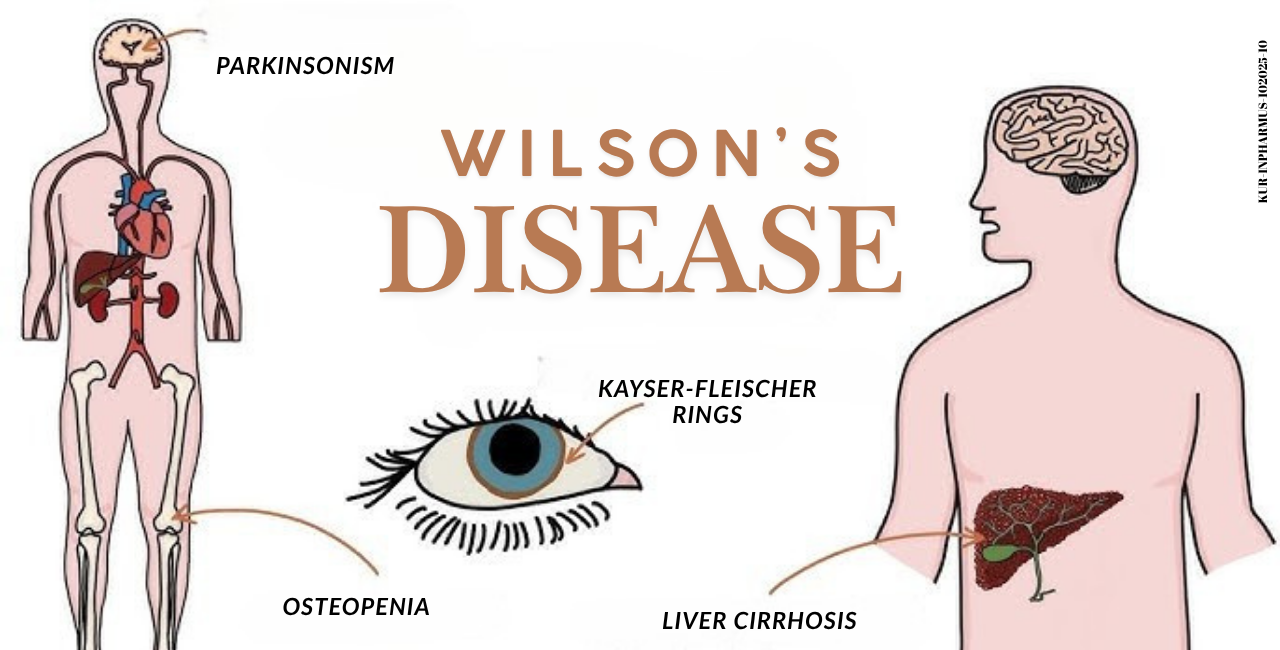
What You Need to Know About Wilson’s Disease

Wilson disease is a rare genetic condition that occurs whenyour body accumulates too much copper, especially in the liver and brain. Yourbody needs a small amount of copper from food to stay healthy, but withouttreatment, Wilson disease can lead to high copper levels that causelife-threatening organ damage.[1] People who have Wilsondisease typically develop symptoms between ages 5 and 35. However, some peopledevelop symptoms at younger or older ages.[2]
Copper plays a key role in building healthy nerves, bones,collagen and the skin pigment melanin. You usually take in copper from the foodyou eat. Your liver produces a substance called bile that removes any extracopper. But in people with Wilson's disease, copper isn't removed properly andinstead builds up.2
Wilson disease is passed on from parents to their children.It requires a copy of the abnormal gene from each parent. It’s very difficultto know who will develop it because parents often have no symptoms to let themknow that they carry the abnormal gene. If you have other close relatives withthe disease, you’re more likely to be at risk.1 When diagnosedearly, Wilson's disease is treatable, and many people with the condition livenormal lives.2
What are the symptoms of Wilson disease?
Symptoms of Wilson disease vary a lot from person toperson.Wilson disease is present at birth (congenital), but the symptoms don’tappear until copper builds up in your liver, brain, eyes or other organs. Some people are diagnosed with other liver ormental health disorders when they actually have Wilson disease. This is becausesymptoms can be nonspecific and similar to other conditions until copper levelsare measured.1
Liver symptoms[3]
· Fatigue.
· Nausea and vomiting.
· Poor appetite.
· Pain over the liver, in the upper part of your abdomen.
· Dark urine color.
· Light color of stool.
· Yellow tint to the whites of your eyes and skin.
Nervous system and mental health symptoms3
· Problems with speech, swallowing, or physicalcoordination
· Stiff muscles
· Tremors
· Anxiety
· Changes in mood, personality, or behavior
· Depression
· Psychosis
Eye symptoms
Many people with Wilson disease have green, gold or brownrings around the edge of the corneas in their eyes (Kayser-Fleischer rings). Abuildup of copper in the eyes causes the Kayser-Fleischer rings.1
How do I take care of myself?
You can’t prevent Wilson disease. If you have a first-degreerelative—a parent, sibling, or child—with Wilson disease, talk with your doctorabout testing you and other family members for the disease.[4] If you have Wilsondisease, you can take care of yourself by taking medicine as directed by yourprovider and by removing foods that are high in copper from your diet. Withtreatment, you’ll be able to reduce your symptoms and prevent life-threateningcomplications.1
References:
1. https://my.clevelandclinic.org/health/diseases/5957-wilson-disease
2. https://www.mayoclinic.org/diseases-conditions/wilsons-disease/symptoms-causes/syc-20353251
3. https://www.niddk.nih.gov/health-information/liver-disease/wilson-disease/symptoms-causes
4. https://www.niddk.nih.gov/health-information/liver-disease/wilson-disease/treatment
.avif)
.svg)

.svg)